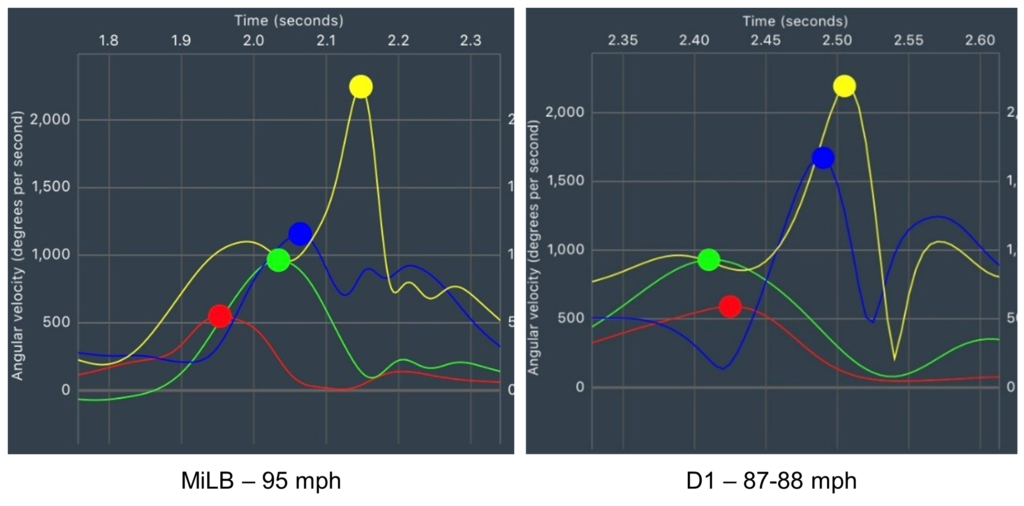The Kinematic Sequence for Injury Prevention and Performance in Baseball and Softball
The kinematic sequence or kinetic chain concept is gaining popularity in baseball and softball for both performance enhancement and injury prevention. Studies in biomechanics dating back to the 1980’s and continuing through today have given us a model for efficiency with the throw and swing. Until much more recently studying and measuring these variables in athletes required an expensive biomechanics lab and lengthy testing procedures, but now with advancements in technology with devices such as 4D Motion and K-Vest we are able to measure and utilize this data in the clinic. Today I wanted to review what the kinematic sequence is and how we use 3D motion capture at Complete Game to reduce the likelihood of injury (or re-injury) and improve performance.
Simply stated the kinematic sequence is the idea that power, whether you are throwing or hitting, comes from the ground up. It looks at rotational velocity of the body segments and their timing. The concept is that there are essentially four links in the chain; the pelvis, torso, arm and hand. The pelvis should reach maximum angular velocity before the torso then the arm then the hand which delivers the ball or bat. Variation in this sequence will lead to decreased efficiency, lower ball velocity or hitting power and increased stress on the body as the athlete tries to make up for a less efficient swing or pitching delivery.
The second component to proper kinematic sequencing is the idea of deceleration pattern. If the athlete is using proper mechanics their body will decelerate in the same sequence. The pelvis starts to decelerate first, then the torso, then the arm and the hand last. This is very important for injury prevention in throwing as research is showing us that many shoulder and elbow injuries occur during the deceleration phase of the throw. Proper sequencing will allow the athlete to use the larger muscles of the legs and trunk to reduce stress on the arm.
The picture below shows two kinematic sequence graphs of two different pitchers. The one on the left shows proper sequencing with both acceleration progressing from pelvis (red), to torso (green), to arm (blue), to hand (yellow). The left graph also shows proper deceleration pattern which is the same as above (red, green, blue, and yellow.) The graph on the right shows an athlete with a problem with timing of their pelvis and torso rotation. You can see that the torso (green) fires first then pelvis (red), then arm (blue), then hand (yellow). This sequence has shown to increased stress on the shoulder and elbow and lower ball velocity.
The next step once we find that an athlete has an issue with proper sequencing is to figure out is the problem with mechanics or is it due to a physical limitation. Our physical assessment will help identify any limitations that could lead to poor sequencing. For the example of the player with the graph on the right we would be sure to check their seated trunk rotation, this would tell us if they had a limitation in mobility which would make rotating the pelvis around before the torso difficult.
We would then give them exercises to work on this movement and when it improved recheck their sequencing.
This is an example of how we are using the latest technology at Complete Game to not only help athletes fully return to sports after injury but also help athletes reduce their likelihood of injury in the first place. For more information on our physical therapy or biomechanics assessment services please contact Greg at Complete Game Physical Therapy 978-710-7204 or gcrossman@completegamept.com.


